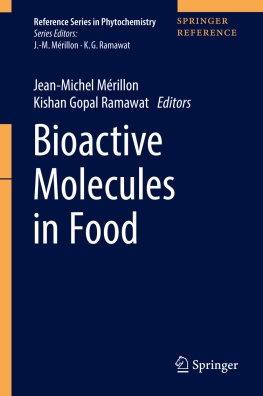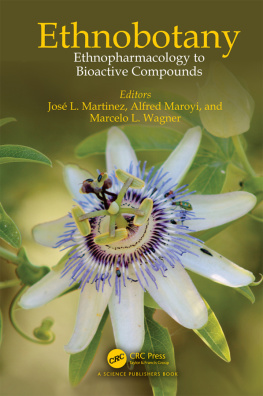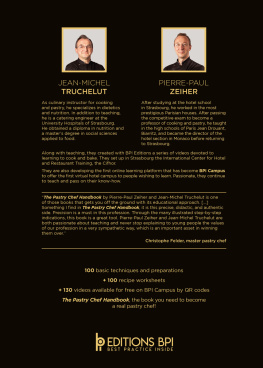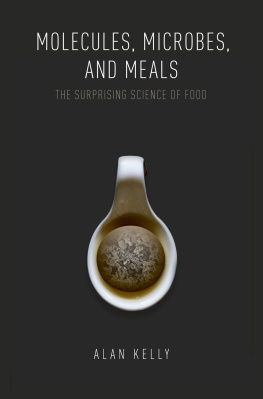Jean-Michel Mérillon - Bioactive Molecules in Food
Here you can read online Jean-Michel Mérillon - Bioactive Molecules in Food full text of the book (entire story) in english for free. Download pdf and epub, get meaning, cover and reviews about this ebook. year: 2019, publisher: Springer, genre: Science. Description of the work, (preface) as well as reviews are available. Best literature library LitArk.com created for fans of good reading and offers a wide selection of genres:
Romance novel
Science fiction
Adventure
Detective
Science
History
Home and family
Prose
Art
Politics
Computer
Non-fiction
Religion
Business
Children
Humor
Choose a favorite category and find really read worthwhile books. Enjoy immersion in the world of imagination, feel the emotions of the characters or learn something new for yourself, make an fascinating discovery.
- Book:Bioactive Molecules in Food
- Author:
- Publisher:Springer
- Genre:
- Year:2019
- Rating:5 / 5
- Favourites:Add to favourites
- Your mark:
- 100
- 1
- 2
- 3
- 4
- 5
Bioactive Molecules in Food: summary, description and annotation
We offer to read an annotation, description, summary or preface (depends on what the author of the book "Bioactive Molecules in Food" wrote himself). If you haven't found the necessary information about the book — write in the comments, we will try to find it.
Bioactive Molecules in Food — read online for free the complete book (whole text) full work
Below is the text of the book, divided by pages. System saving the place of the last page read, allows you to conveniently read the book "Bioactive Molecules in Food" online for free, without having to search again every time where you left off. Put a bookmark, and you can go to the page where you finished reading at any time.
Font size:
Interval:
Bookmark:
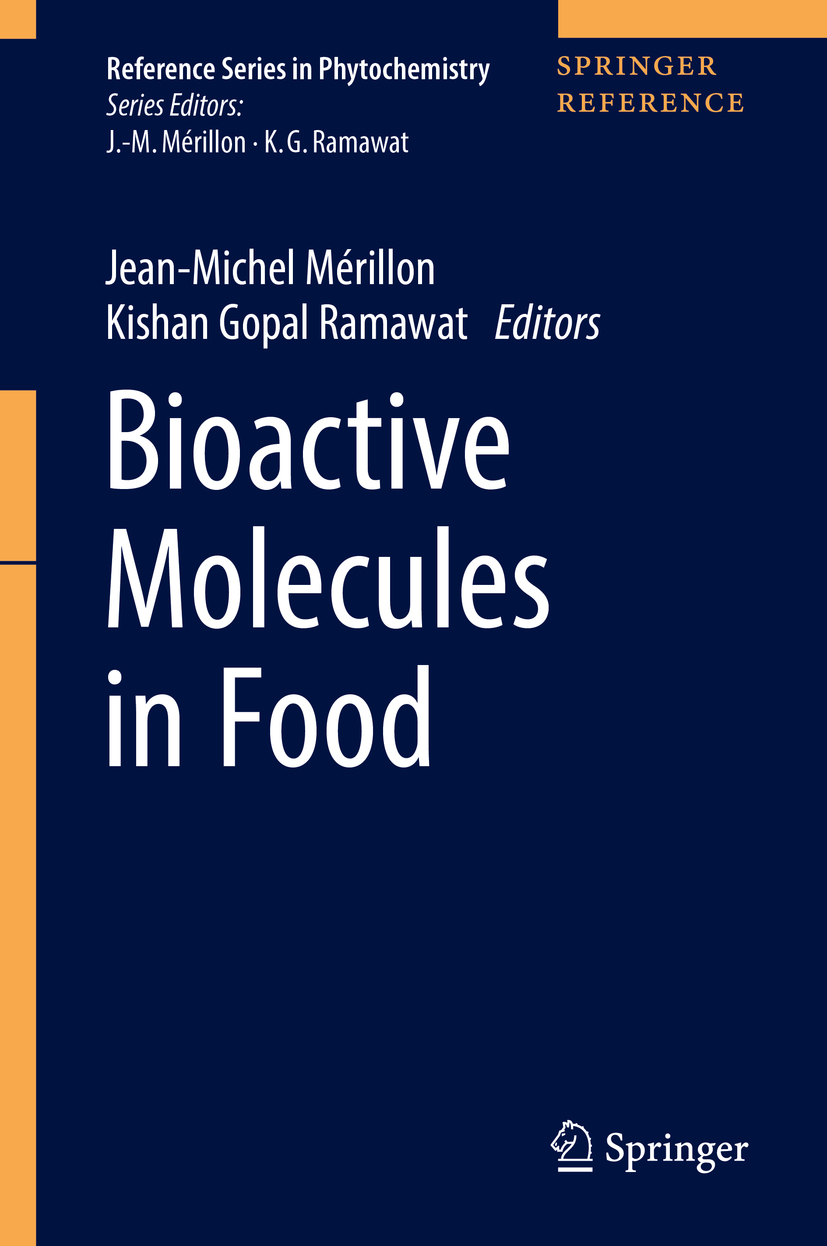
This reference works series provides a platform for all information on plant metabolites and phytochemicals, their chemistry, properties, applications, and methods. By the strictest definition, phytochemicals are chemicals derived from plants. However, the term is often used to describe the large number of secondary metabolic compounds found in and derived from plants. These metabolites exhibit a number of nutritional and protective functions for human welfare such as colorants, fragrances and flavorings, amino acids, pharmaceuticals, hormones, vitamins and agrochemicals. Besides food, fibers, fuel, cloth and shelter, a vast number of wild plants can hence provide important sources for medicines, especially in developing countries for their traditional health systems. Natural products have inspired and provided the foundation to the bulk of FDA-approved compounds and there is tremendous increase in natural products and natural products derived compounds that have been registered against many prevailing diseases. Natural product industry has shown tremendous growth and is expected to continue to do so in the near future. The present series compiles reference information on various topics and aspects about phytochemicals, including their potential as natural medicine, their role as chemo-preventers, in plant defense, their ecological role, their role in plants as well as for pathogen adaptation, and disease resistance. Volumes in the series also contain information on methods such as metabolomics, genetic engineering of pathways, molecular farming, and obtaining metabolites from lower organisms and marine organisms besides higher plants. The books in the series are hence of relevance in various fields, from chemistry, biology, biotechnology, to pharmacognosy, pharmacology, botany, or medicine. Each volume is edited by leading experts and contains authoritative contributions by renowned authors.
More information about this series at http://www.springer.com/series/13872

This Springer imprint is published by the registered company Springer Nature Switzerland AG.
The registered company address is: Gewerbestrasse 11, 6330 Cham, Switzerland
We are pleased to present a three-volume treatise on Bioactive Molecules in Food . Bioactive molecules are present in all the food consumed, and we come to know more about them with the availability of more and more sophisticated tools and techniques. As we know more about benefits of food and their molecules, we intend to improve food quality and fortify the food for human welfare and disease prevention. The aim of the book is to present the state of information about bioactive molecules present in various foods we consume daily and their effect on our physical and mental state of body. The concept of functional foods is of recent origin, but in old civilizations like that of China and India, there are sayings about consumption of selected food and their effect on well-being. Hence history is being revisited.
Selection, cultivation, and domestication of plants for human welfare is almost 9,000 years old which is reconfirmed by a recent report from the remains of domesticated crop plants at an archaeological site in southwest Amazonia. Plants are easy to catch as compared to animals, and hunting evolved with evolution of tools and techniques with civilization of men. Thus, fruits, tubers, bulbs, and seeds were easy to gather and consumed by early men. Some chapters deal with cultivation and improvement of nutrients in food plants.
The debate about food consumption and vegetarian and nonvegetarian diet or consumption of various fatty acids in oils (PUMA, MUFA, omega-3 FA) may continue for another decade. With the new facts coming out day by day, this scene changes for a while and then resets to a new concept. Whatever the diet regimen, a cereal, a pulse, and a fruit make an essential part of all diets. With the advent of new and sophisticated technology, more information available about bioactive molecules present in the food, best combinations of food components to meet nutritional requirement, and fate of ingested molecules as well as their beneficial effects are known. Major part of the book is devoted to this aspect.
Consumers have become very attentive to quality, safety, and health benefits of food. This has direct repercussion on food industry to develop such foods, especially processed and packaged foods and particularly in terms of calorie, quality, nutritional value, and bioactive molecules present in them. Market for nutraceuticals and food supplements is growing at rapid pace with increasing middle class in developing countries and elderly population in developed countries. Therefore, this is a very timely compilation of information about bioactive molecules present in our daily food.
Longevity of life is associated with preferential consumption of selected food which can prevent diseases and keep overall health in good condition. Society is keen to know the benefits of organic food, bioactive molecules present in their food, and possibility of food fortified with beneficial molecules. This has direct impact on research related to this field by all those involved in food cultivation, processing, and production including meat quality. Certain chapters are devoted to this aspect in the book.
Font size:
Interval:
Bookmark:
Similar books «Bioactive Molecules in Food»
Look at similar books to Bioactive Molecules in Food. We have selected literature similar in name and meaning in the hope of providing readers with more options to find new, interesting, not yet read works.
Discussion, reviews of the book Bioactive Molecules in Food and just readers' own opinions. Leave your comments, write what you think about the work, its meaning or the main characters. Specify what exactly you liked and what you didn't like, and why you think so.

